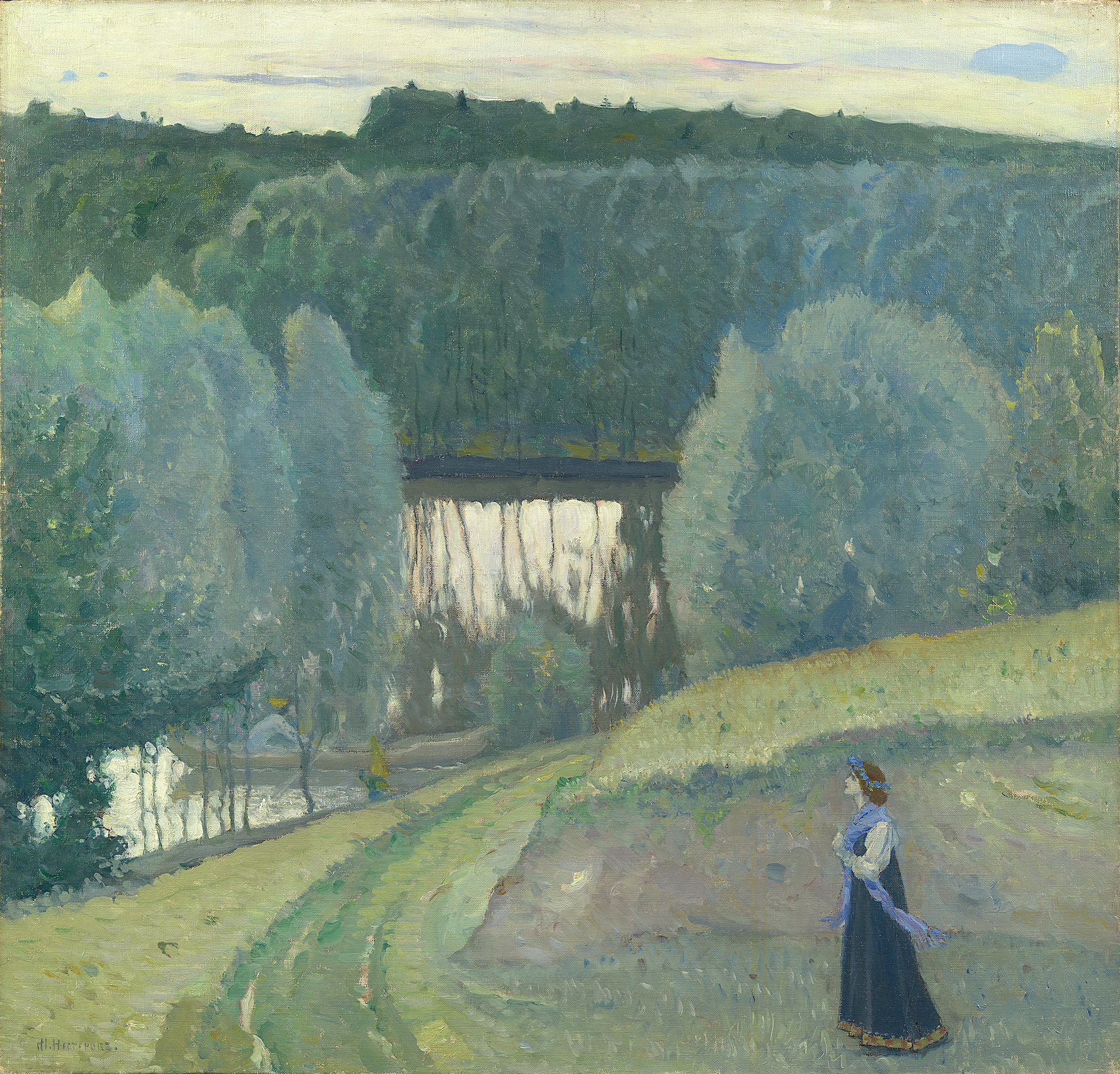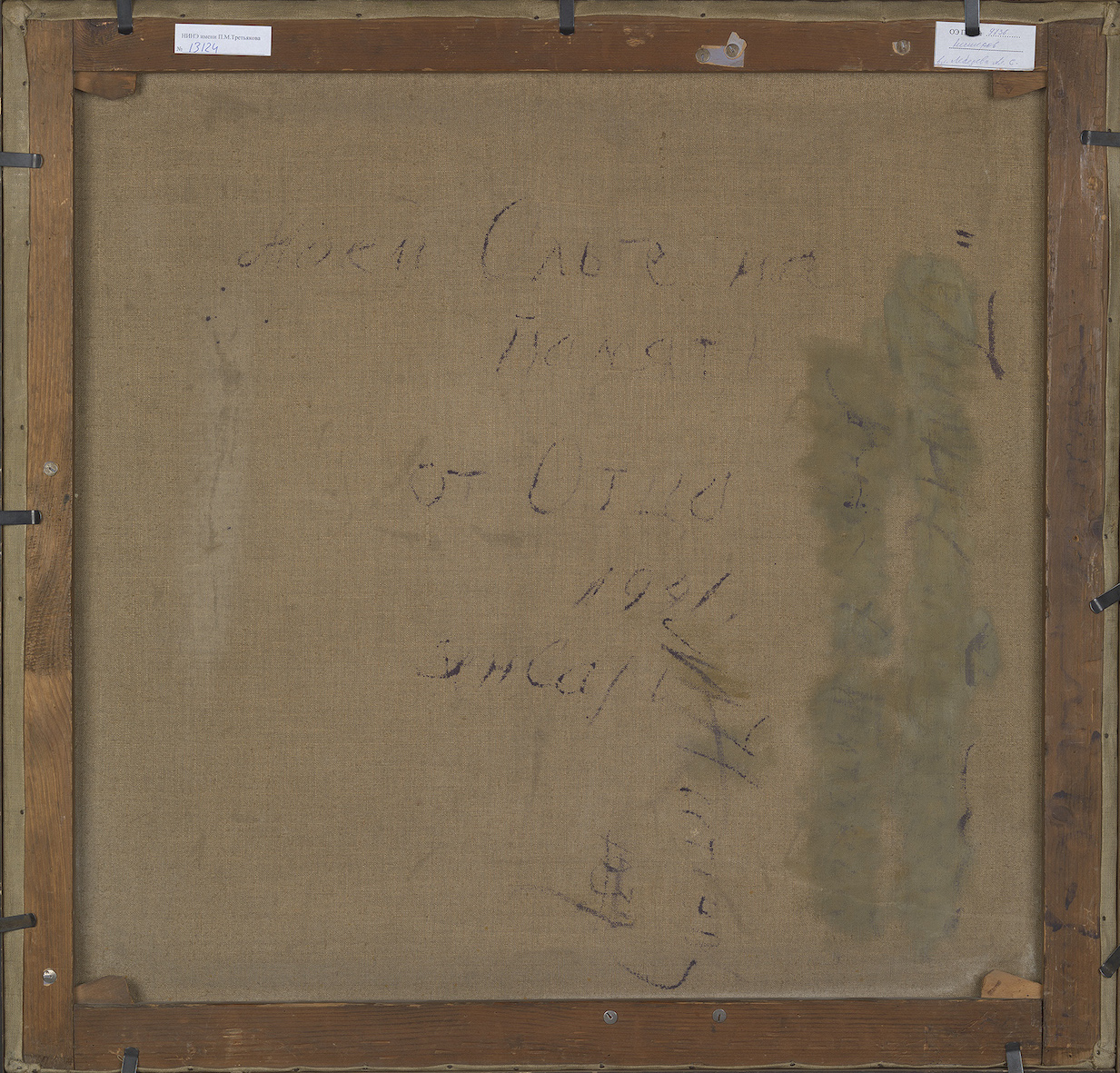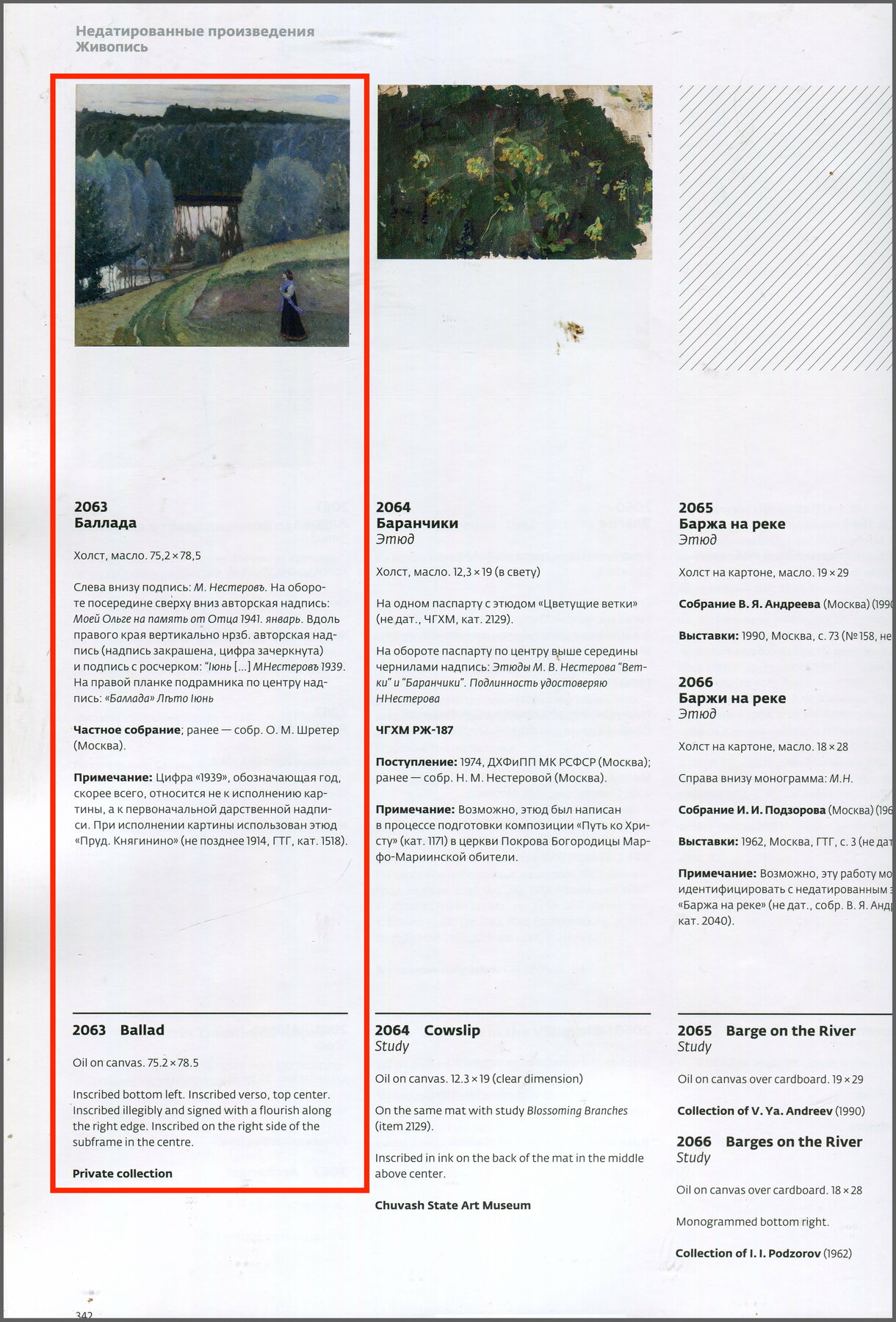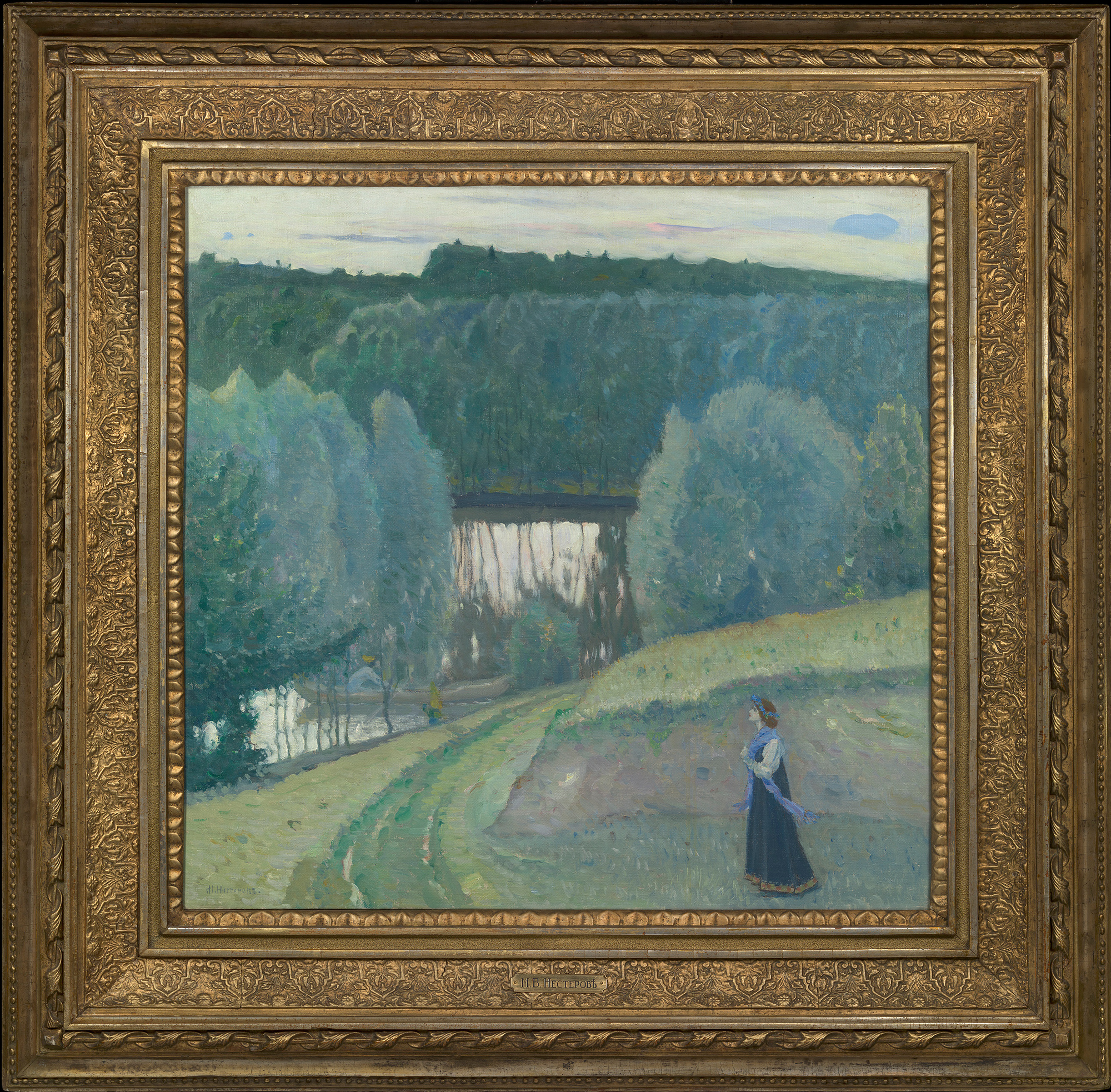Russian Art + NFT Auction
10 June 2021

* 14. NESTEROV, MIKHAIL (1862–1942)
Ballad, signed, also further signed, inscribed in Cyrillic with a dedication and dated 1941 on the reverse, also further titled and inscribed “leto Iiun” on the stretcher.
Oil on canvas, 75 by 78.5 cm.
380,000–500,000 GBP
Executed in the 1920s.
Provenance: A gift from the artist to Olga Nesterova-Shreter (1886–1973), his eldest daughter, in 1941 (inscription on the reverse).
Thence by descent.
Acquired from the above by the present owner in the 1980s.
Private collection, Europe.
Authenticity of the work has been confirmed by the expert Yu. Chaikina.
Authenticity has also been confirmed by the expert I. Shibanova.
Literature: P. Klimov, Mikhail Vasilievich Nesterov. Catalogue raisonné: zhivopis, grafika, Moscow, Simvoly, 2019, p. 342, No. 2063, illustrated and listed.
Mikhail Nesterov’s Ballad, painted in the 1920s, continues a remarkable gallery of elegiac images begun in the 1890s, wherein nature blends harmoniously with a lyrical human figure.
Over the most fruitful twenty years of his artistic career, Nesterov created a whole novel in pictures about the fate of young woman. He explored the theme of personal sadness, tinged with happy memories, arising from the death of his first wife, and drew inspiration from the Pavel Melnikov-Pechersky’s twin novels In The Forests and On The Hills.
The 1917 October Revolution and early years of Soviet rule put the middle-aged Nesterov and many admirers of his work in a difficult position. It became obvious that the range of topics that habitually enthused Nesterov and his refined patrons – the search for God, the quiet monastic life, and the secluded beauty of the Russian landscape – were at odds with the new State ideology. A difficult financial situation and an uncertain future forced Nesterov to repeat his old canvases endlessly to make ends meet. A further reason was that his patrons were just as melancholy and confused and wanted to perpetuate the memory of Nesterov’s image of the “Russian soul”– seeking a different way of life that prepared for catharsis through suffering amid the total purity of its “sacred” humility.
Sometimes, when created in such circumstances, the repetition of and variations on earlier motifs proved to be almost more inspirational than the originals.
Ballad also came into being as the continuation and development of an old theme. It is based on a landscape that Nesterov had painted near the farm at Knyaginino circa 1910s. He was very fond of this little village near Kharkov, which belonged to his friend Princess Natalia Yashvil, and lived there with his family for many years. After the Revolution Nesterov began to see his memories of Knyaginino as a symbol of a happy past. He described the farm at Knyaginino as a "slice of paradise. It had an uninterrupted orchard with two lakes.... The marvellous Malorossian house was furnished in the English style. Apart from short breaks, we lived there for nine years – nine wonderful, unforgettable years... .”
By reverting to a previous work and peopling it with his usual figures – a girl in a traditional Russian dress crowned with flowers and gazing pensively at the sky, and a man rowing a boat across a lake – Nesterov gave the composition a characteristically lyrical mood. The painting forms part of his long narrative about a lonely female soul, full of inner beauty and sadness, seeking an outlet for her restless impulses. While creating a new poetic image Nesterov varied the main motif of the cycle’s well-known paintings On the Hills, Abandoned, The Nightingale Sings, Wayfarers and Sisters, and interprets once more the idea of harmony between the mood of the human soul and the natural world surrounding it.
According to Nesterov’s friend Sergei Durylin (1886–1954), the prominent writer, “just as Turgenev created his own female image by depicting Asya, Liza and their sisters and friends, and we only have to say ‘Turgenev’s girl’ for a younger sister of Pushkin’s Tatyana to take shape in our minds, so it is enough to say ‘Nesterov’s girl’ for the living image of a country maiden to appear before us – a poetic image inseparable from silent sadness.”
Nesterov’s eldest daughter Olga Nesterova-Shreter (1886–1973) was to recall that “in his images of women, my father would always prefer moments of spiritual loneliness, sorrow or a sense of doom.”
Fate was to burden the Nesterov family with many such moments. In 1937 Olga and her husband Viktor Shreter (1885–1938), a lawyer and professor at Moscow University, were arrested at their home on Sivtsev Vrazhek Lane in Nesterov’s presence. His son-in-law was shot. His daughter was sent to a camp as a wife of a ‘Traitor to the Motherland,’ then exiled to Kazakhstan. The painting to be offered at MacDougall’s was a gift from Nesterov to my Olga as a keepsake from her father – presented to her in January 1941, just after her return from exile. As such it has a symbolic resonance all its own.
Verso of the present lot
Present lot as illustrated in the 2019 catalogue raisonné



Notes on symbols:
* Indicates 5% Import Duty Charge applies.
Ω Indicates 20% Import Duty Charge applies.
§ Indicates Artist's Resale Right applies.
† Indicates Standard VAT scheme applies, and the rate of 20% VAT will be charged on both hammer price and premium.